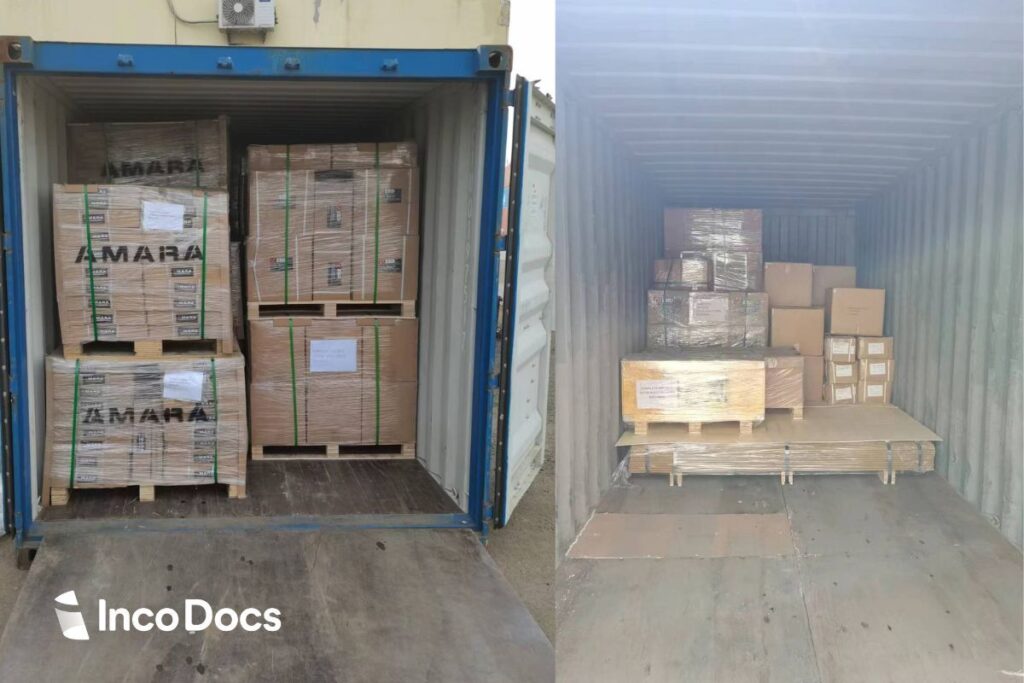
Artikel
02
mei
What is the difference between FCL and LCL shipping?
When goods are transported across the world by sea, they are usually transported inside shipping containers. FCL Shipping (Full Container Load) and LCL Shipping (Less than Container Load) are 2 methods of shipments that package goods inside shipping containers.
FCL shipping is when a single shipment takes up the entire space of the shipping container. For example, a 20’ General Purpose shipping container can hold up to 32m3 of products inside. So if the total size or weight of the products takes up the majority of the shipping container, FCL shipping will be used. So the shipper will pack all of the products into the shipping container, and the International seafreight will be charged as a full shipping container.
LCL shipping is when the shipper’s goods are relatively small, for example only a few pallets of goods. In this case, the goods will still be loaded into a shipping container, however the freight charges will not be billed for the whole shipping container, but will be charged based on the overall cargo size (cubic meter) or weight, whichever is greater.
How does LCL shipping work?

LCL shipping is similar to FCL shipping, however using LCL shipping requires additional processes and additional handling of the goods along the global supply chain. Using LCL shipping, various shipments from different shippers are loaded together into one shipping container.
Using an example of 2 pallets of goods to be shipped from Shanghai, through to Longbeach in the USA, the LCL shipment may follow a typical process as below:
- The shipper (exporter) will deliver the 2 pallets to the freight forwarder or shipment consolidator’s location or warehouse near the port of Shanghai.
- Then, the shipper’s 2 pallets, along with various other shipper’s goods will be loaded inside a shipping container and ready for export.
- The shipping container will be loaded on board the vessel at Shanghai port (Port of Loading), then the vessel will begin it’s voyage towards the USA.
- Along the way, the shipping container may be unloaded from the vessel at a port on the way to the USA. As the shipping container holds various shipper’s goods, these goods may have different final destinations. So in some cases, the contents inside the shipping container may be unloaded, and re-loaded inside another shipping container, and loaded on board a different vessel to sail through to Longbeach port (Port of Destination).
- Upon the vessel arrival into Longbeach port, the shipping container will be unloaded from the vessel, and the contents of the shipment unloaded at the port.
- Once the customs clearance process is complete, the different shipper’s goods will be available to be transported through to their final destination.
How does FCL shipping work?
FCL shipping usually does not require as many processes or additional handling of goods as LCL shipping. Using FCL shipping, the shipper loads their goods inside the shipping container ready for export.
Using an example of 16 pallets of goods to be shipped from Shanghai, through to Longbeach in the USA, the FCL shipment may follow a typical process as below:
- The shipper (exporter) will load the 16 pallets into the shipping container at their factory or warehouse location.
- The shipping container will be sent the the port and loaded on board the vessel at Shanghai port (Port of Loading), then the vessel will begin it’s voyage towards the USA.
- The shipping container may be unloaded from the vessel at a port on the way to the USA, to be tran-shipped onto another vessel. Because the FCL shipment contains products from 1 shipper, the container is simply loaded on board a different vessel to sail through to Longbeach port (Port of Destination).
- Upon the vessel arrival into Longbeach port, the container will be unloaded from the vessel. Providing the customs clearance process is complete, the container can be trucked through to the final destination, where the products will be unloaded and the empty shipping container returned back to Longbeach port.
How to choose between FCL and LCL shipping methods?
Choosing between FCL or LCL shipping depends on a few factors. The main factors are:
- The overall size (cubic meter m3) of the cargo to be exported.
- The total of all of the logistics costs incurred to transport the shipment from origin, all the way through to final destination.
- The timeframe that products are required at the final destination. FCL shipping may be faster or safer, as it does not require products to be unloaded and re-loaded into other shipping containers along the global supply chain.
- The financial outlay required to purchase and ship cargo in higher volume.
If you take these factors into account, you can decide which shipping method is most suitable for your business.

Is LCL or FCL shipping cheaper?
As mentioned above, the cost effectiveness of LCL Vs. FCL shipping depends on the overall size of the cargo to be exported, and the total costs incurred to transport the shipment from origin to final destination.
If there are only a few pallets of goods to be shipped, LCL shipping will be more cost effective. However, there will be a point at which FCL shipping will be more cost effective, as the overall size of the cargo reaches a certain point. This could typically be when size of the cargo will fill more than half of the space inside a shipping container.
Let’s look at an example of a shipper that has to export 2 pallets of goods. A 20’ general purpose shipping container (20’GP) can hold up to 32m3 of products inside. If a shipper only has to ship 2 pallets of goods it may only take up 3m3 of space. If sending by an FCL shipment, the freight will be charged over a full container, which may be $3000USD for seafreight. When shipping by LCL shipping, the freight will be charged by size or weight (whatever is greater), which may be charged at $150USD/m3, so the seafreight cost will be $450USD.
The main costs incurred will be the seafreight costs (from the shipping line, in USD) to transport the shipment from the Port of Loading (POL) to the Port of Destination (POD). However, there are many other additional fees and charges incurred along the global supply chain. For example, there are various customs clearance charges, documentation fees, port handling fees and other fees to take into account.
Before deciding if to ship via FCL or LCL shipping, importers must have a good understanding of how to calculate the final landed costs of imported products. Calculating the landed costs takes into account ALL of the charges incurred along the supply chain (there are so many of them), and splits these costs over each product, to understand the final landed cost to import the products to the final destination.
In this example above, it makes sense to ship 2 pallets by LCL cargo. If you can come close to filling a shipping container, FCL shipping becomes a much more cost effective option, however it takes greater financial outlay to purchase and ship more goods.
What's your reaction ?
Follow us on Social Media
Some Categories
Recent posts

November 22, 2024
Loonkosten 2025: hier kun je als werkgever op rekenen

November 20, 2024
Books Article

November 19, 2024
Hoe Aristoteles nu zorgt voor impactvolle communicatie

November 16, 2024
Loonkosten 2025: hier kun je als werkgever op rekenen

November 09, 2024
Dit betekent het regeerakkoord voor jou als ondernemer

 Inloggen
Inloggen
 Registreren
Registreren






Comments (0)
No reviews found
Add Comment